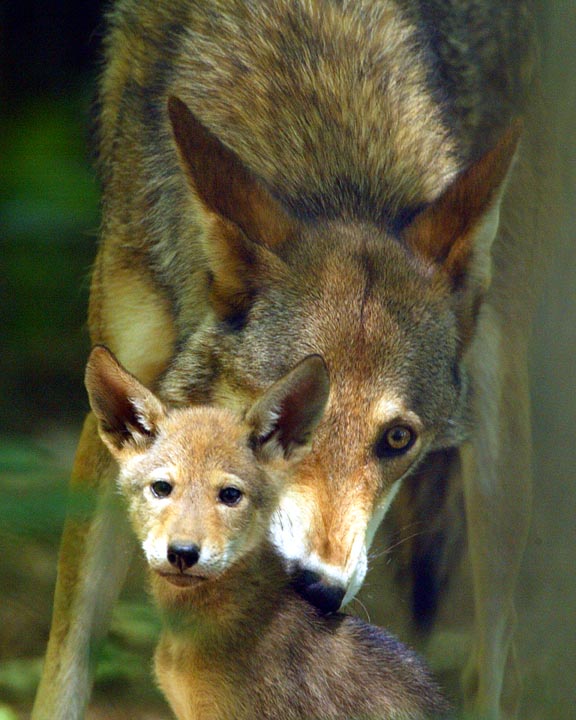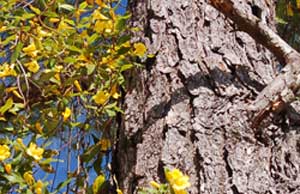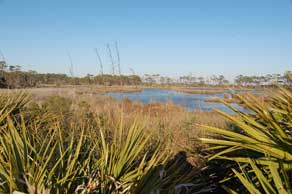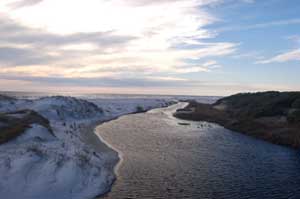|
 Photo Source: FWC
Photo Source: FWC |
HAPPY TAILS
On an undeveloped barrier island near the west end of Apalachicola Bay, something furry roams. Red wolves! St. Vincent National Wildlife Refuge is a propagation site for the Red Wolf Recovery Project, whose goal it is to restore red wolf populations in the wild. The refuge manages both fresh and saltwater wetlands, which in turn, provide habitats for a multitude of rare and endangered species. A pair of adult red wolves is allowed to roam free on the island to breed and rear pups. Because the island serves as a propagation site, the pups are eventually collected and transported to a release site within Alligator River National Wildlife Refuge in North Carolina, where a population of red wolves has been re-established in the wild.
|
 Photo Source: Alexa Elliot
Photo Source: Alexa Elliot |
FLOWERS AND AIR
Apalachicolaís rich natural beauty is a source of inspiration for many. One of those inspired by its lush wonders was famed botanist Dr. Alvan Wentworth Chapman. Originally from Massachusetts, Dr. Chapman came to Apalachicola in 1847. Enthralled by the wide variety of ferns and flowering plants, it was here that he wrote a comprehensive guide entitled Flora of the Southern United States. Another important historical figure was Dr. John Gorrie. Although he mainly served as postmaster and mayor of Apalachicola, it was his work as an inventor for which he is best remembered. Wanting to help those suffering from a severe yellow fever outbreak, Dr. Gorrie created a machine that produced cold-air. His invention was patented in 1851 and laid the foundation for modern day air-conditioning and refrigeration.
|
 Photo Source: Alexa Elliot
Photo Source: Alexa Elliot |
TUG-OF-WATER
Formed where the Chattahoochee and Flint Rivers converge at Lake Seminole, near the Florida/Georgia state line, the Apalachicola River is Floridaís largest river in terms of flow. The Apalachicola River discharges an average of 16 billion gallons of water per day into Apalachicola Bay. Its 20,000-square-mile watershed is crucial to the areaís plants, wildlife and local economy. But Florida isnít the only state that needs and wants the riverís water. Growing communities upstream in Georgia and Alabama have an ever-increasing demand for freshwater, both for agriculture as well as for municipal uses. For years, the three states have been entangled in a water war over the amounts and timing of freshwater released downstream. A reduced flow of freshwater down the Apalachicola River and into Apalachicola Bay has potentially devastating impacts on the regionís natural resources, as well as the local seafood industry that depends on these resources. With restricted water access, wildlife is threatened and important wetlands are starting to dry out. This makes harvesting commercial species like mussels, oysters and shrimp much more difficult. Along with seafood, something sweet is also at risk. Honey!
|
 Photo Source: Alexa Elliot
Photo Source: Alexa Elliot |
ONLY THE RARE
The beautiful white sands of Walton County, Florida, are home to approximately 15 coastal dune lakes. These lakes form behind the large sand dunes that line the beach. As lake water overflows, it creates an outfall in the dunes and freshwater empties into the Gulf of Mexico. In return, saltwater flows into the lake with the tide and creates a mixture known as brackish water. Rare and highly dynamic, coastal dune lakes occur only in a few other select areas on earth, such as Madagascar and Australia. These ever changing bodies of water provide food and refuge for a variety of fresh and saltwater species.
Resources for this article
have been provided by the FWC, the Nature Conservancy, the Florida Department of Environmental Protection, and the U.S. Fish & Wildlife Service .
|





